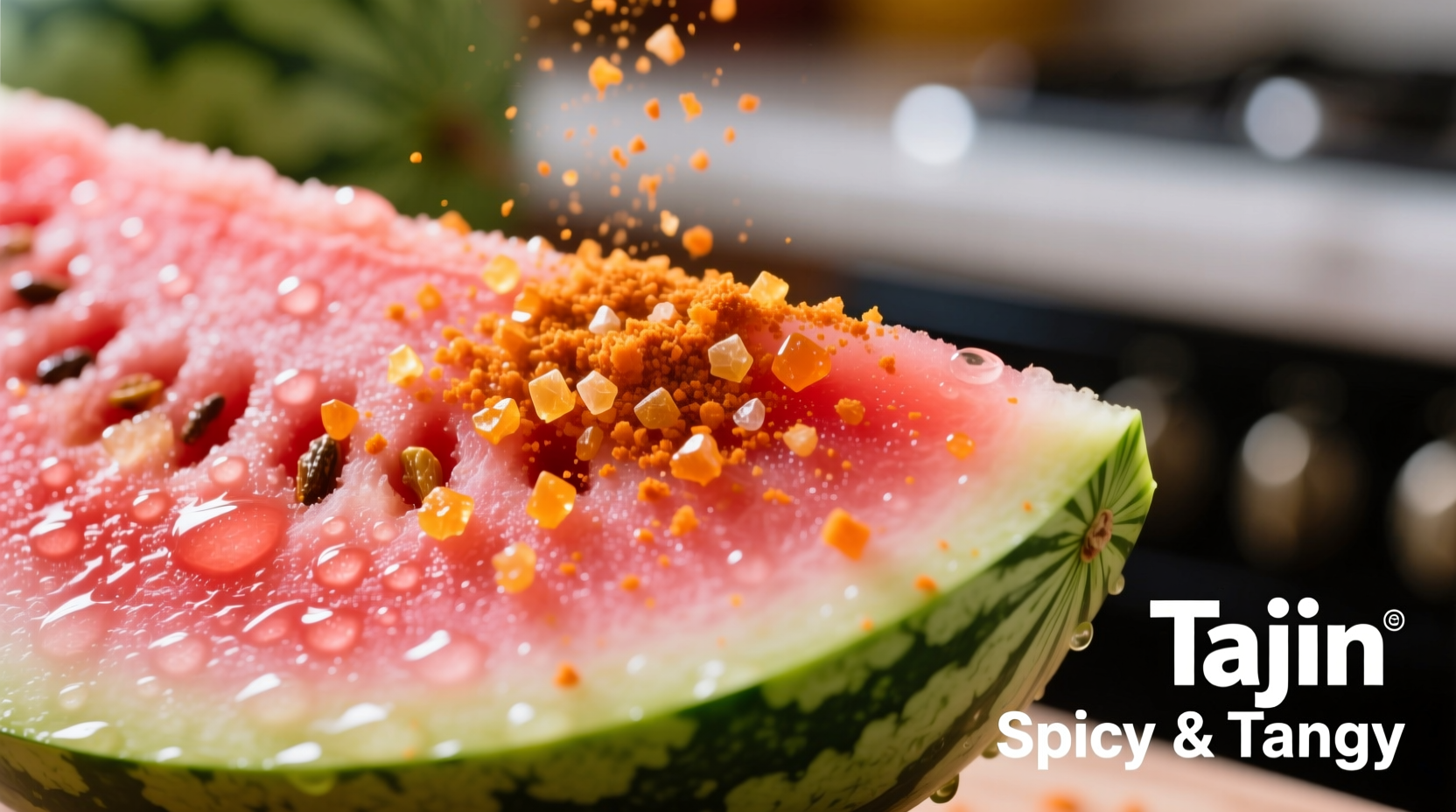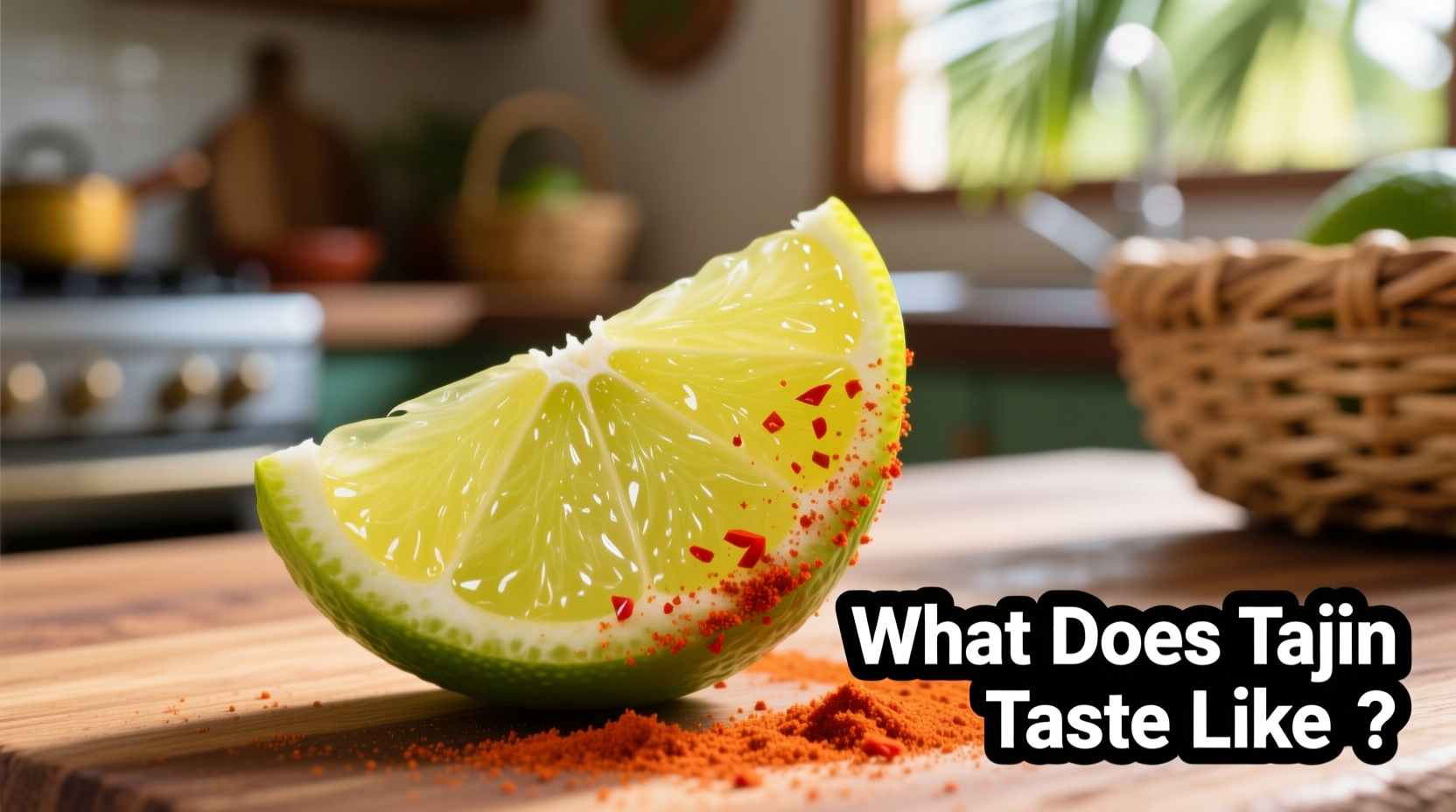If you've ever wondered what does Tajin taste like before sprinkling it on your watermelon or margarita glass, you're not alone. This iconic Mexican seasoning has taken the culinary world by storm, but understanding its precise flavor profile helps you use it effectively in your cooking. Let's break down exactly what makes Tajin's taste so distinctive and how to incorporate it into your dishes.
Breaking Down Tajin's Flavor Components
Tajin's signature taste comes from three primary elements working in harmony. Unlike many spice blends that focus on heat alone, Tajin delivers a balanced sensory experience that enhances rather than dominates your food.
The Tangy Citrus Foundation
The most immediate sensation when tasting Tajin is its bright, zesty lime flavor. This isn't artificial citrus—Tajin uses dehydrated lime juice that provides a natural tartness reminiscent of freshly squeezed limes. The citrus element cuts through richness and adds vibrancy to both sweet and savory applications. When you're exploring what Tajin seasoning tastes like, this tangy component is what makes it particularly effective on fruits and in beverages.
The Subtle Heat Profile
Contrary to what some might expect from a chili-based seasoning, Tajin delivers only mild heat. The blend uses guajillo, puya, and cayenne peppers that register between 1,500-2,500 Scoville units—comparable to a mild jalapeño. This gentle warmth enhances other flavors without causing discomfort, making Tajin accessible even to those with low spice tolerance. When considering what does Tajin taste like compared to other chili powders, its restrained heat level is one of its most distinctive features.
The Savory Salt Element
Salt comprises about 70% of Tajin's blend, providing the essential savory backbone that carries the other flavors. Unlike plain table salt, Tajin's salt works synergistically with the chili and lime to create what food scientists call "flavor layering"—where each component enhances the others. This is crucial when you're trying to understand what Tajin tastes like on different foods, as the salt element helps the seasoning adhere to and penetrate various textures.
How Tajin's Flavor Evolves on Your Palate
Understanding the complete taste experience requires examining how Tajin develops across time. Unlike single-note seasonings, Tajin offers a progression of flavors:
| Timeframe | Flavor Experience | Sensory Notes |
|---|---|---|
| 0-2 seconds | Bright citrus tang | Immediate zesty sensation, similar to lime zest |
| 3-5 seconds | Savory salt foundation | Enhances mouthfeel and prepares palate for next notes |
| 6-10 seconds | Subtle chili warmth | Gentle heat that builds gradually without burning |
| 10+ seconds | Complex aftertaste | Harmonious blend where no single element dominates |
This flavor timeline explains why Tajin works so well as both a finishing seasoning and ingredient—its taste evolves beautifully without overwhelming your dish. When experimenting with what Tajin tastes like on different foods, remember that this progression may accelerate or change slightly based on the food's temperature and moisture content.

When Tajin Shines (and When It Doesn't)
While Tajin has become incredibly versatile, certain applications showcase its flavor profile better than others. Understanding these context boundaries helps you maximize its potential:
Ideal Applications
- Fresh fruits (watermelon, mango, pineapple) - The citrus complements natural sugars while the salt enhances sweetness
- Avocado dishes - Balances richness with bright acidity
- Cocktail rims - Creates a sophisticated alternative to salt or sugar
- Grilled vegetables - Adds complexity without masking natural flavors
Limited Effectiveness
- High-heat cooking - Lime flavor diminishes significantly above 300°F
- Long-simmered dishes - Citrus notes fade while salt becomes overly dominant
- Very sweet desserts - Can create unbalanced flavor profiles
- Dairy-heavy dishes - May clash with creamy textures
Knowing these boundaries is essential when determining what Tajin tastes like in various cooking scenarios. For best results, add Tajin during the final stages of preparation or as a finishing touch.
How Tajin Compares to Similar Seasonings
When evaluating what does Tajin taste like compared to other options, consider these key differences:
| Seasoning | Flavor Profile | Best Uses | Heat Level |
|---|---|---|---|
| Tajin | Tangy lime, mild chili, salt | Fresh fruits, vegetables, cocktail rims | Mild (1,500-2,500 SHU) |
| Chili-Lime Salt | Primarily salt with subtle citrus | General seasoning, finishing salt | Very mild |
| Chili Powder | Earthy, smoky, varying heat | Cooking, spice blends, rubs | Moderate to high |
| Adobo Seasoning | Garlic, oregano, cumin, pepper | Meats, stews, beans | Mild to moderate |
The distinctive balance of citrus, salt, and mild heat makes Tajin particularly effective for applications where you want flavor enhancement without significant heat. This explains why many people specifically search for what Tajin seasoning tastes like before trying it—they're looking for that unique sweet-spot between plain salt and traditional hot spices.
Practical Tips for Using Tajin Effectively
Now that you understand what does Tajin taste like, here's how to incorporate it successfully:
Start Small, Taste Often
Tajin's salt content means a little goes a long way. Begin with a light sprinkle (about 1/8 teaspoon per serving) and adjust to taste. Remember that the salt element becomes more pronounced as food sits, so wait 5-10 minutes before adding more.
Consider Food Temperature
Cold foods like fruits and beverages showcase Tajin's citrus notes most effectively, while room-temperature applications allow the chili element to shine through more. Avoid using Tajin on very hot foods, as heat diminishes the delicate lime flavor.
Create Balanced Flavor Pairings
Combine Tajin with complementary elements:
- With creamy avocado or cheese for contrast
- Alongside fresh cilantro for herbal notes
- With a touch of honey for sweet-spicy balance
- With high-water-content fruits like watermelon
Storage for Maximum Flavor
To preserve Tajin's distinctive taste profile, store it in an airtight container away from light and moisture. Properly stored, it maintains peak flavor for 6-12 months. Exposure to humidity causes the salt to clump and diminishes the vibrant citrus notes that define what Tajin tastes like.
Common Misconceptions About Tajin's Flavor
Several myths persist about Tajin's taste profile that deserve clarification:
- "Tajin is extremely spicy" - In reality, it's milder than most hot sauces and many chili powders
- "It tastes just like regular chili powder" - The prominent lime element creates a distinctly different profile
- "It's only for Mexican food" - Its versatility works across cuisines from Asian to Mediterranean
- "The flavor is artificial" - Tajin uses natural ingredients without artificial flavors or colors
Understanding these distinctions helps explain why so many home cooks search for what does Tajin taste like before buying—they want to move beyond marketing claims to genuine flavor expectations.
Final Thoughts on Tajin's Unique Flavor Profile
Tajin's enduring popularity stems from its ability to enhance food without overpowering it. The specific combination of tangy lime, savory salt, and mild chili creates a flavor experience that's greater than the sum of its parts. When you're wondering what does Tajin taste like, remember it's not just about individual components but how they work together to elevate your culinary creations.











 浙公网安备
33010002000092号
浙公网安备
33010002000092号 浙B2-20120091-4
浙B2-20120091-4